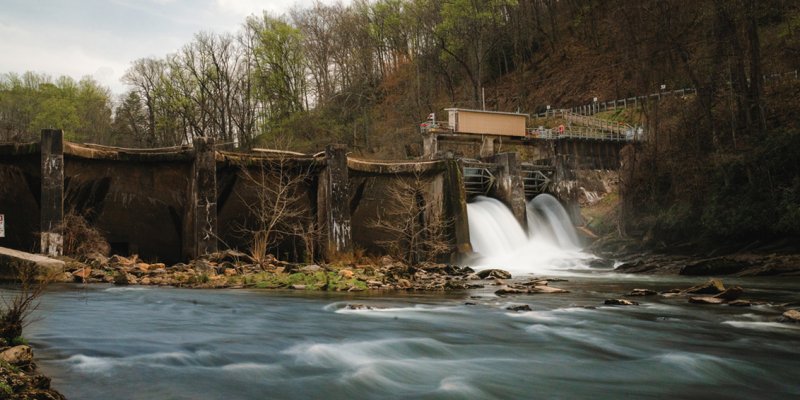The dam, still water teems with biodiverse aquatic species that used to be able to swim upstream into the Qualla Boundary, but are now cut off .
Currently, the Ela Dam divides the Oconaluftee River, which disrupts the water flow, and disconnects the land from its origins.
Although the dam is currently inactive, it was originally built to generate electricity as a part of the Smoky Mountain Power Company in the mid-’20s. In 1942, it was purchased by Nantahala Power & Light Company. Assembly of the dam required many workers at water level and below the dam.
Owle is the secretary of agriculture and farming for the EBCI. Both of his parents are members of the Tribe, and his leadership is pushing the dam removal project forward.
The Ela Dam cuts a portion of the Oconaluftee River from the Qualla Boundary.
The sicklefin redhorse.
The Appalachian elktoe mussel.
The Eastern hellbender are a few of the species that the coalition hopes will thrive with the expanded territory that will come with the river’s upcoming reconnection.
Erin McCombs is the conservation director for the southeast division of American Rivers, a nonprofit that protects the many challenges our waterways face.
A fishing weir—a barrier that alters or regulates the flow of water in order to trap fish—sits along the river. The weir was placed by the Cherokee Tribe. These weirs work with the water, rather than against it like a dam. Water is significant to the Cherokee Nation both practically and spiritually.
Mainspring Conservation Trust began in 1997, and aims to, “conserve the land, restore the water and connect the people to these valuable resources.”
In English, Oconaluftee translates to, “by the river,” and comes from the name of a Cherokee village, Egwanulti. Honoring Long Man Day, a recent group event in which many people participated in river clean-ups, is a way to share the significance of water and all it provides.
